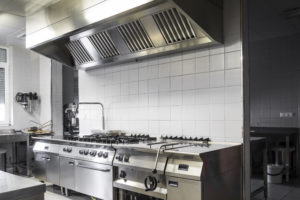The online food delivery business is booming with its revenues increasing at an exponential rate each year and cloud kitchens are here to capture this market. Technological advancements have led to significant changes in consumer behaviour which has become increasingly inclined towards online delivery as opposed to dining in restaurants, thus opening up new avenues for cloud kitchens. Even traditional restaurants have begun to take cognisance of these developments and they are now venturing into this field. But what exactly is a cloud kitchen? Let’s take a look!
Cloud Kitchens and Their Advantages
A cloud kitchen is a commercial kitchen which operates without a storefront and offers online ordering and delivering services. It can operate 24 hours a day or even at specific time slots, for example, specifically for late night delivery.
Since cloud kitchens do not require a shop front, there is a significant cost cutting in terms of setting up a brick and mortar shop with decor, maintenance and serving staff. It allows the owners to focus primarily on the quality of the food and its timely delivery. Furthermore, since cloud kitchens can be operated on specific timings for specific purposes, it helps cut down costs of rent, infrastructure and equipment.
Types of Cloud Kitchens:
- Independent cloud kitchen: This is the classic cloud kitchen model. It is a restaurant without a physical component. It consists of a single brand which prepares its food in a kitchen according to the orders that it receives online. It’s a business model which is self reliant in terms of receiving orders and delivering packed meals.
- Multi-brand cloud kitchen: This business model is based on a close analysis of food consumption trends in a particular locality. The most popular or the most ordered cuisines in a given area or a demographic are identified and catered to. The food preparation occurs in a shared commercial kitchen where different brands prepare and package the meals. It is a strategic and efficient model which generates profits and saves costs.
- Hybrid cloud kitchen: This model is a mix of a takeout restaurant and a cloud kitchen. It works in the same way as a cloud kitchen except it also has a front which allows customers to come and get their food. The food is delivered as well. The delivery process is either independent or happens through an aggregator food delivery app such as Zomato or Swiggy. This model has a single brand working in a single kitchen but it also has multiple walk- in outlets which offer both take away as well as delivery services.
- Cloud kitchens owned by delivery apps: It is a model in which a delivery app company leases or purchases a conveniently located kitchen space and allots it to various up and coming food brands. The orders are placed via these apps and the delivery fleet also belongs to these apps. This model involves a symbiotic relationship between the app company and the food brand. The food brands make use of the app’s reach in order to get more customers and the app makes use of the talent to provide its users with more options.
If you are interested in starting, operating or expanding your F&B business based on any of the above mentioned business models, we’re here to help you through it!
Contact us to learn more!




